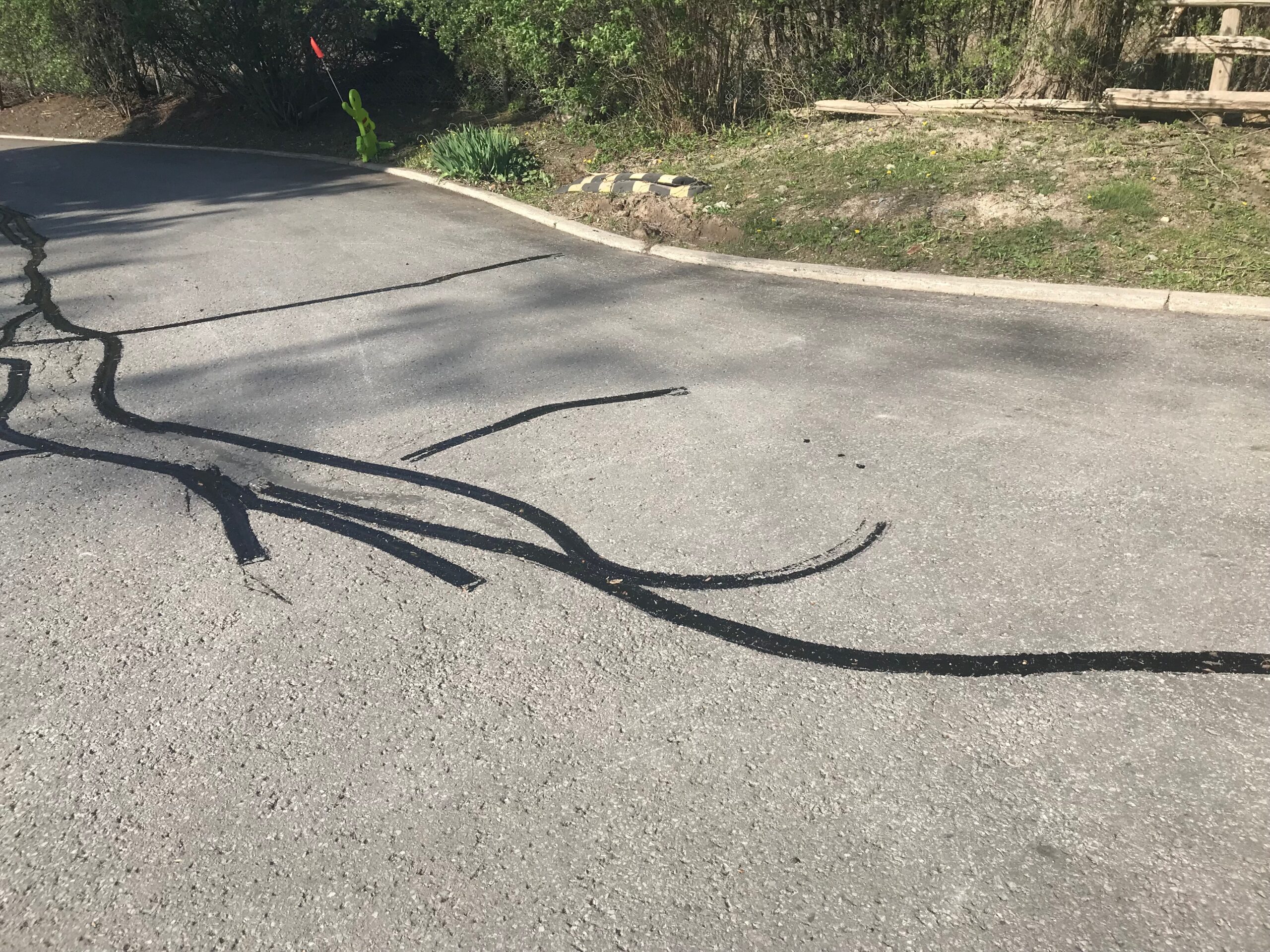
Damages such as cracking in asphalt pavement are so much more than just an aesthetic issue. They indicate that there could be some structural problems with the asphalt pavement that need to be addressed quickly.
Not only can cracks in asphalt cause vehicular and property damage, but they can also pose a potentially serious safety hazard for anyone who uses your property. A poorly maintained asphalt pavement can therefore lead to a lot of legal liability issues, since property owners are responsible for issuing asphalt crack sealing and other repairs as needed.
So how can you tell if your asphalt needs repairs? Here are 10 of the most common types of asphalt pavement cracks that should be repaired immediately.
1. Ice Cracking
Temperature fluctuations during the fall and winter months cause asphalt pavement to expand and contract almost on a daily basis. This constant shift in the asphalt causes the binding agent in the aggregate to weaken and separate, which eventually leads to minor cracking that can be filled with runoff water, snow, or ice in the winter and debris during other times of the year. Water and ice can quickly fill these cracks, forcing them to expand further and cause more extensive cracking and damages. To prevent this from happening, it’s crucial to seal all cracks immediately.
2. Alligator Cracks
Alligator cracks are arguably the most common type of asphalt pavement cracking that occurs on commercial and residential properties that get a lot of use. Also known as fatigue cracking, these cracks are characterized by their uncanny resemblance to alligator skin. They’re attributed to being constantly exposed to immense pressure and weight from large vehicles such as pickup trucks, SUVs, vans, and transport trucks.
Although they appear to largely be a cosmetic issue, alligator cracks are actually serious and need to be dealt with immediately because they can rapidly spread to other parts of your asphalt pavement. Alligator cracks are typically a sign of a potentially deeper and more complex structural issue, so it’s important to carefully assess the damage. Patching up alligator cracking is a good temporary solution, but it won’t work long-term, so you need to determine what’s causing the cracking in the meantime.
3. Block Cracking
If you notice large square or rectangular-shaped cracks throughout your asphalt pavement’s surface, this is what’s known as block cracking. Block cracking typically takes place in parts of your property that get very little to no use and it’s a good indication of a potentially serious internal structural failure in the asphalt pavement.
Block cracking usually happens as a result of asphalt pavement shrinkage that’s directly related to freeze/thaw cycles and extreme temperature fluctuations throughout the year, but especially during the winter months and seasonal changes.
4. Potholes
Potholes start off as minor cracks in your asphalt. If left untreated for too long, those minor cracks will eventually develop into much larger cracks and then holes. As time goes on, debris, ice, snow, and water will eventually make their way in and cause even wider and deeper expansion. Continued distress and vehicular use of that same spot will cause further aggregate segregation and cracking which only serves to expand the pothole even further and cause more structural damage. For that reason, all cracking—no matter how minor it may appear to be at first—should be repaired immediately before developing into a pothole.
5. Edge Cracking
As the name suggests, this is a type of crack that occurs at the very edges of the asphalt pavement. Edge cracking usually takes place within a few feet of the outer edge of the pavement. This indicates poor asphalt mixing, construction, and application. It also means that the structure lacks adequate support along the edges. If it’s not fixed right away, then this type of asphalt cracking can lead to large chunks of asphalt breaking off the edges of the structure, also known as crumbling.
6. Transverse Cracking
Also known as thermal cracking, transverse cracks occur when the asphalt pavement is prematurely exposed to extreme freezing temperatures right after application. Transverse cracking is characterized by crack formations that appear perpendicular to the centerline of the pavement or the direction of asphalt application.
Freezing temperatures cause asphalt to naturally contract, tighten, and shrink. If the asphalt hasn’t had enough time to fully cure, this process can cause it to weaken and crack.
7. Longitudinal Cracking
Linear cracking is another name for longitudinal cracking. Similar to transverse cracking, longitudinal cracks also take place near the centerline of the asphalt pavement or along the direction of application. However, the cause of longitudinal cracking is very different. Longitudinal cracking is the result of poor asphalt aggregate construction and application in addition to the improper placement of supporting joints within the structure of the asphalt pavement. Joints should be installed directly outside of the wheel path of vehicles to prevent consistent exposure to heavy loads and undue pressure that can cause a weak asphalt structure to buckle.
8. Slippage Cracking
Slippage cracking occurs when a new layer of asphalt slips over the underlying substrate it was meant to cover, giving a rounded crescent appearance. This type of damage indicates a lack of proper bonding between the old and new layer of asphalt. There are a number of reasons why the existing and new layer of asphalt failed to bond. It could be improper installation such as neglecting to apply a tack or prime coat. Lack of adhesion could also be caused by dirt, oil, and other contaminants infiltrating the bonding process.
Regardless of the cause, slippage cracking needs to be repaired quickly. Otherwise, it can develop into a much worse type of damage: a pothole.
9. Joint Reflection Cracking
Joint reflection cracking typically occurs in instances when asphalt pavement is applied over concrete. Asphalt is a flexible paving aggregate, whereas concrete is rigid, meaning the two don’t work well together. Due to lack of bonding and the concrete’s inflexible nature, joint reflection cracks typically occur right where the asphalt and concrete connect.
10. Bleeding
Bleeding, also known as flushing, occurs when too much bitumen (the binding agent in asphalt aggregates) is added to the asphalt mixture. As a result, the finished product takes on a very slippery, shiny, and sticky residue that can lead to dangerous driving and walking conditions. Laying down stone screenings or coarse sand absorbs some of the additional moisture and can correct this issue.
If your asphalt pavement is in disrepair, then contact the experts at Sure-Seal Pavement Maintenance Inc. We have nearly 25 years of experience in the asphalt industry and can provide professional solutions to restore your pavement for the long haul.

